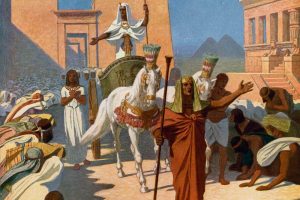Seeing In The Dark
SEEING IN THE DARK
Shalom,
The Hebrew month of Tammuz started at the beginning of this week – Sunday, June 25th.
Tammuz is the fourth month in the Hebrew calendar, which starts with the month of Nissan.
On the 17th of Tammuz – שבעה עשר בתמוז Moses smashed the two tablets with the Ten Commandments, after realizing that People of Israel sinned with the Golden Calf.

In fact, through generations, many historical calamities befell the Jewish people on the same date:
Mishnah Taanit 4:6 tells us that five calamities befell the Jewish people on this day:
1. Moses broke the two tablets of stone on Mount Sinai;
2. The daily ‘tamid’ offering ceased to be brought;
3. The walls of Jerusalem were breached (proceeding to the
destruction of the Temple);
4. Prior to Bar Kokhba’s revolt, Roman military leader Apostomus burned a Torah scroll;
5. An idol was erected in the Temple.

According to the Kabbalistic Book of Formation – ‘Sefer Yetzirah’ – ספר יצירה (attributed to patriarch Abraham), each Hebrew month carries the energy of a particular Hebrew letter and a particular capacity/trait.
And so, the month of Tammuz is associated with two attributes:
The Hebrew letter ‘khet’ – ח and the sense of sight


These are the spiritual vessels G‑d provides to repair the damage that occurred this month.
How do these tools work?
To understand their intrinsic meaning one can relate to the tradition to start with their first mention in the Torah. (Everything follows after its first appearance).
So, let’s see where the letter ‘khet’ is mentioned for the first time in the Torah and what is the first mention of sight.
The first appearance of the letter ‘khet’ – ח is found in the second verse of the first chapter in the book of Genesis:
וְהָאָרֶץ, הָיְתָה תֹהוּ וָבֹהוּ, וְחֹשֶׁךְ, עַל-פְּנֵי תְהוֹם; וְרוּחַ אֱלֹהִים, מְרַחֶפֶת עַל-פְּנֵי הַמָּיִם
Now the earth was unformed and void, and darkness (begins with the letter ‘khet’) was upon the face of the deep; and the spirit of God hovered over the face of the waters.
The sense of sight is first mentioned in the fourth verse of the first chapter in Genesis:
וַיֹּאמֶר אֱלֹהִים, יְהִי אוֹר; וַיְהִי-אוֹר
וַיַּרְא אֱלֹהִים אֶת-הָאוֹר, כִּי-טוֹב
G‑d said let there be light, and there was light.
G‑d saw the light that it was good…

The first appearance of the letter khet – ח is in the word – חושך“ darkness.”
Hence the essence of the letter khet is associated with darkness.
In contrast, sense of sight generally requires light – (“G‑d saw the light that it was good”).
So, it appears that we are faced with a paradoxical challenge:
The month of Tammuz is equipped with two contradicting vessels:
Darkness and Light.
It follows that in order to rectify what has happened during the month of Tammuz, we need to be able to see in the dark!!!
How can we learn to see in the dark?
Let us refer again to the verse:
וַיַּרְא אֱלֹהִים אֶת-הָאוֹר, כִּי-טוֹב
G‑d saw the light, that it was good.
According to Kabbalah, this verse, establishes the equivalence of light and good.
Then it also tells us that there are two categories of good:
Revealed Good, (when we are happy) and Concealed Good, (when we suffer).
Revealed good comes from the revealed levels of G‑d – the outer, lower, and more superficial modes of Divine Presence.
Concealed good comes from G‑d’s inner, higher and concealed Divine Presence.
During retributions one sees only darkness. But in retrospect, when things are accomplished, the events take on a different meaning and then one perceives life from a new, different and expanded perspective.
From this new perspective, the troubling events are now perceived as a ‘blessing in disguise’, revealing the hidden “good”.
Through our suffering G‑d teaches us to find the good that hides in the suffering and after realizing this, we learn
“to see in the dark“

Let us hope and pray that this hidden good, acted upon by these mystical two tools of the month of Tammuz, being associated with the letter ח and the sense of sight is revealed to us very soon!






